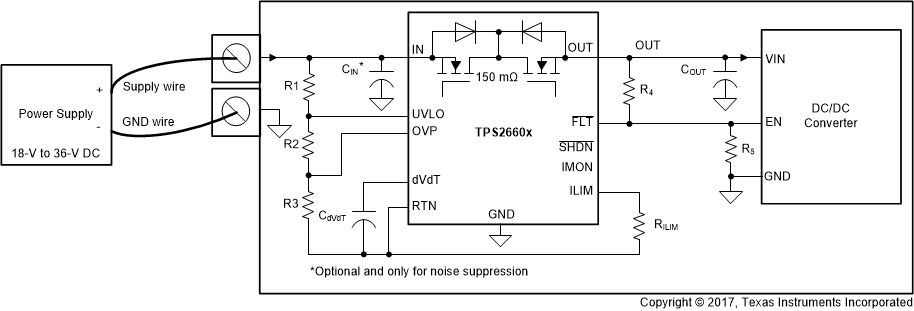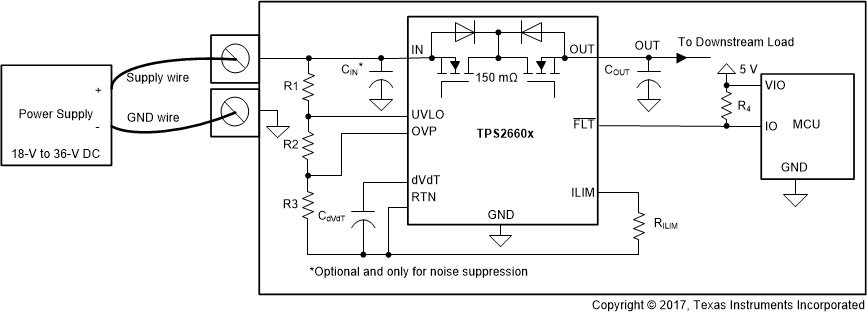SLVA934A November 2017 – May 2020 TPS2660
2 Fault Status Monitoring Using TPS2660 eFuse
The FLTb signal of the TPS2660 combines power good indication along with system faults such as overload, overvoltage, undervoltage, and shutdown. This combination enables downstream loads like DC/DC converters to turn on heavy loads after power good indication. An application example where FLTb is directly connected to enable pin of a DC/DC converter is shown in Figure 1. During startup, FLTb is pulled low by the TPS2660 eFuse initially and is released after eFuse output is fully ON. Pullup resistor R4 and pulldown resistor R5 are used to scale down the pullup voltage and are chosen based on DC/DC converters' enable threshold voltage and its operating maximum rating.
 Figure 1. TPS2660 Power Good Indication Using FLTb
Figure 1. TPS2660 Power Good Indication Using FLTb Alternatively, the FLTb signal can be used by an external MCU to take control decisions under various systems fault conditions. An application example where FLTb is directly connected to the IO pin of the MCU and pulled up to the 5-V IO supply is shown in Figure 2.
 Figure 2. TPS2660 Fault Status Monitoring Using MCU
Figure 2. TPS2660 Fault Status Monitoring Using MCU